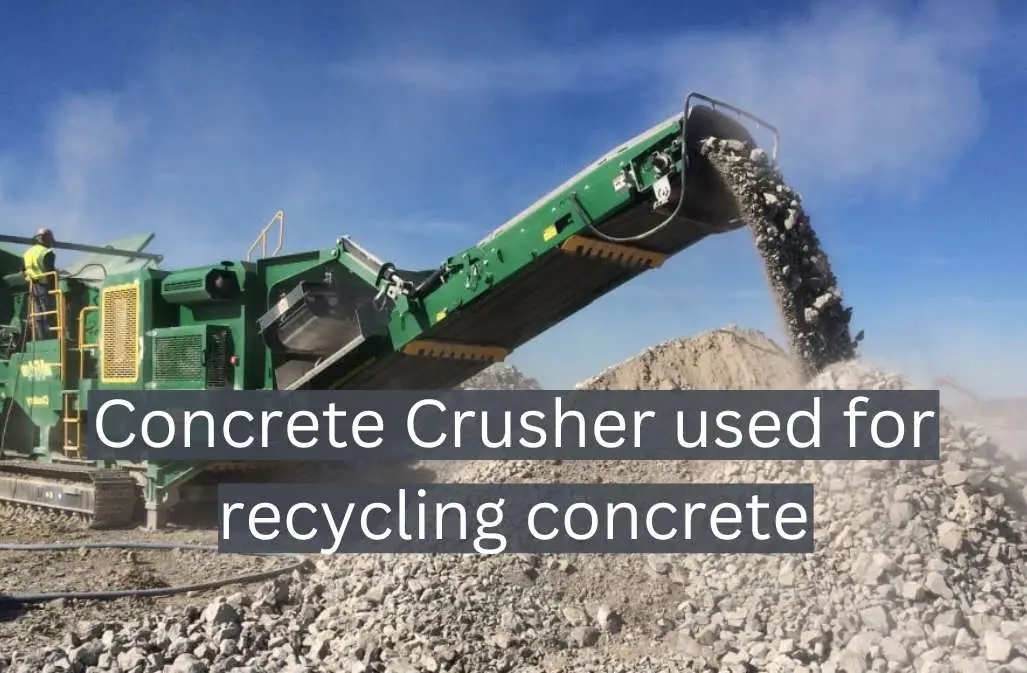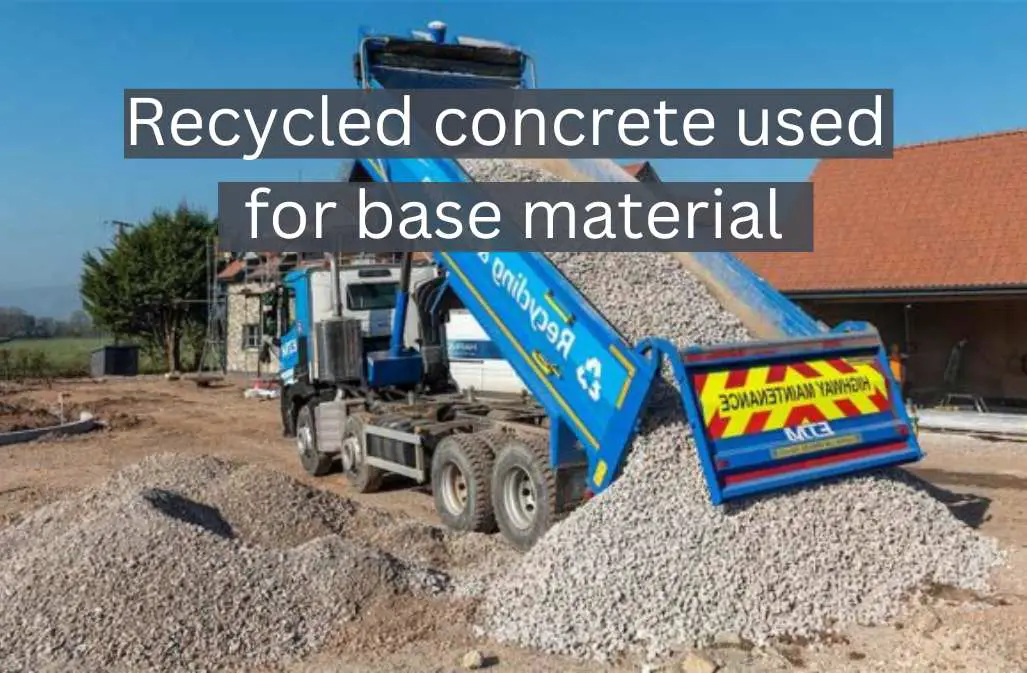Can concrete be recycled?
From Waste to Resource: The Power of Concrete Recycling
The short answer is: yes, concrete can be recycled. Like any other material waste, such
as plastic, concrete waste can be an environmental problem unless something is done
about it.
In fact, according to ScienceDirect, concrete waste is the primary source of
solid construction waste, accounting for about 50% of all construction waste.
So what do we do, in situations like this, where human activities like construction pose a
threat to our environment? We find ways to manage it, and in this case, we recycle
rather than multiply wastages and pollution.
Besides revealing whether or not concrete can be recycled, this blog also examines the
possibilities and benefits of concrete recycling.
how is concrete recycled?
As already established, concrete recycling is the process of breaking down old concrete
into new materials for reuse in different construction projects. This can be done by
following the outlined steps below.
- After a building is demolished, the concrete collected by the construction workers
is taken to a recycling plant using dump trucks or large transportable dumpsters - In the recycling plant, the concrete is broken down into small pieces, removing
metal, wood, and other residues - From there, the crushed concrete is sorted by size and arranged in piles. In this
way, the various materials can be separated and reused - The material thus obtained is then passed through a crusher, which breaks it into
smaller gravel particles - In some instances, a mobile concrete crusher can be used on site to reduce transportation costs
- The recycled "crushed concrete aggregate" can be used in many different areas,
such as a base for building new roads, driveways, sidewalks, and foundations.

5 ways recycled concrete can be used:
Recycled concrete is used in a variety of ways. Below are some examples.
- Crushed concrete is the most common form of recycled concrete and can be
used as a subbase material for projects such as driveways, foundations, and
roads. They can also be used in block-fill applications and as structural backfill - Recycled concrete can be mixed with other materials to create new products,
such as concrete pavers or blocks - Recycled concrete can also be used in soil stabilization applications and
construction projects to help reduce costs associated with using traditional
materials - In addition, recycled concrete can be used to make gravel, riprap, and other
products used in landscaping, drainage systems, and erosion control applications - Recycled concrete can be used to manufacture bricks and other building
products, such as cinder blocks, paving stones, and concrete tiles
Overall, recycling concrete is a great way to reduce waste and reuse valuable materials.
From crushed stone to gravel and beyond, recycled concrete can be used in various
ways to benefit the environment and save money on construction projects.

The benefits of concrete recycling
In general, recycling materials means converting waste objects into new, reusable
materials.
Similarly, recycling concrete means converting waste concrete into new
materials that are typically used as aggregates for new construction projects.
The concrete waste may come from demolished walls, foundations, sidewalks, or entire
buildings.
It is interesting to note that recycling concrete, even though it has not always been a
popular option in the construction industry, is now the best way to control the amounts
of construction waste.
Recycled concrete has many benefits for the construction budget and the environment,
some of which are explained below.
Preservation of raw materials
Recycling concrete is a great way to reduce the environmental impact of concrete
production.
Every ton of recycled concrete can replace up to 1.5 tons of new aggregate,
thus reducing the number of natural resources that need to be extracted and processed.
Mitigate carbon footprint
Recycling concrete reduces the carbon footprint of concrete production by up to 70%,
making it an ideal choice for environmentally conscious construction projects or any
project at all.
Specifically, recycling one ton of cement could save 1,360 gallons of water
and 900 kg of carbon dioxide (CO2).
Reduction of construction cost
Recycling concrete can also help reduce construction costs and the need to transport
and purchase new aggregates, allowing projects to stay within budget.
This step benefits large projects with long timelines by reducing the cost of transporting and
purchasing new materials.
Creation of valuable materials without additional costs
Recycling concrete helps to create helpful material that can be reused in other projects.
Concrete rubble is crushed into a variety of sizes, from gravel to sand-sized particles,
after which it can be used in several ways, from road construction to home landscaping.
Reusing materials in this way helps to extend the life of valuable resources and keep
them out of landfills.
Pollution prevention
The use of recycled concrete as the base material for road surfaces reduces
environmental pollution caused by the transportation of the material.
Creation of employment opportunities.
Recycling is a vast industry that creates a wide array of jobs. During the process of
concrete recycling, many jobs are created for various people and the local economy is
benefited.
can hardened concrete be recycled?
Yes, hardened concrete can be recycled. The recycling process typically involves using heavy machinery to crush the concrete into smaller pieces, which are then sorted and cleaned to remove any contaminants or debris.
The resulting material, called recycled hard concrete aggregate, can then be used as a subbase material or as an aggregate in new concrete mixtures. The recycling of hardened concrete helps to reduce waste and promote sustainability.
can reinforced concrete be recycled?
Yes, reinforced concrete can be recycled, although the process is more complex than recycling non-reinforced concrete.
Reinforcing steel, such as rebar, must be removed from the concrete prior to crushing to prevent damage to the crushing equipment.
After the steel is removed, the concrete can be crushed into smaller pieces, sorted, and cleaned to create recycled aggregate.
The most difficult part of recycling reinforced concrete is the removal of the steel reinforcement bars (rebar) from the concrete.
The removal of rebar can also be challenging because it is often intertwined with the concrete, making it difficult to separate.
The process of removing rebar from concrete can be time-consuming and labor-intensive, which can increase the cost of recycling reinforced concrete.
Additionally, the quality of the recycled aggregate may be affected if the rebar is not fully removed or if it is crushed into small pieces that are difficult to remove.
is it a good idea to recycle concrete yourself?
Recycling concrete yourself can be a cost-effective way to dispose of old concrete and reduce waste, but it also has some potential drawbacks.
Here are some factors to consider when deciding whether to recycle concrete yourself:
- Physical demands: Breaking down concrete and removing rebar can be physically demanding work that requires heavy equipment and tools.
- Safety concerns: Recycling concrete can be dangerous, as it involves heavy machinery, sharp tools, and the potential release of harmful dust.
- Equipment costs: Renting or purchasing the necessary equipment for concrete recycling can be expensive.
- Quality control: If you are not experienced in recycling concrete, it can be difficult to control the quality of the recycled aggregate.
- Time and effort: Recycling concrete takes time and effort, and it can be a challenging and dirty job.
In some cases, it may be more cost-effective and safer to hire a professional concrete recycling company to handle the job. Consider your experience, equipment, and resources when deciding whether to recycle concrete yourself.
in conclusion:
Concrete is recycled by first breaking it down into smaller pieces using machines such as crushers and screens.
The resulting material, called crushed concrete or recycled aggregate, is then sorted and cleaned to remove any contaminants or debris.
At this time, it's ready to be used as a subbase material or as an aggregate in new concrete mixtures.
Learn how concrete is made.














